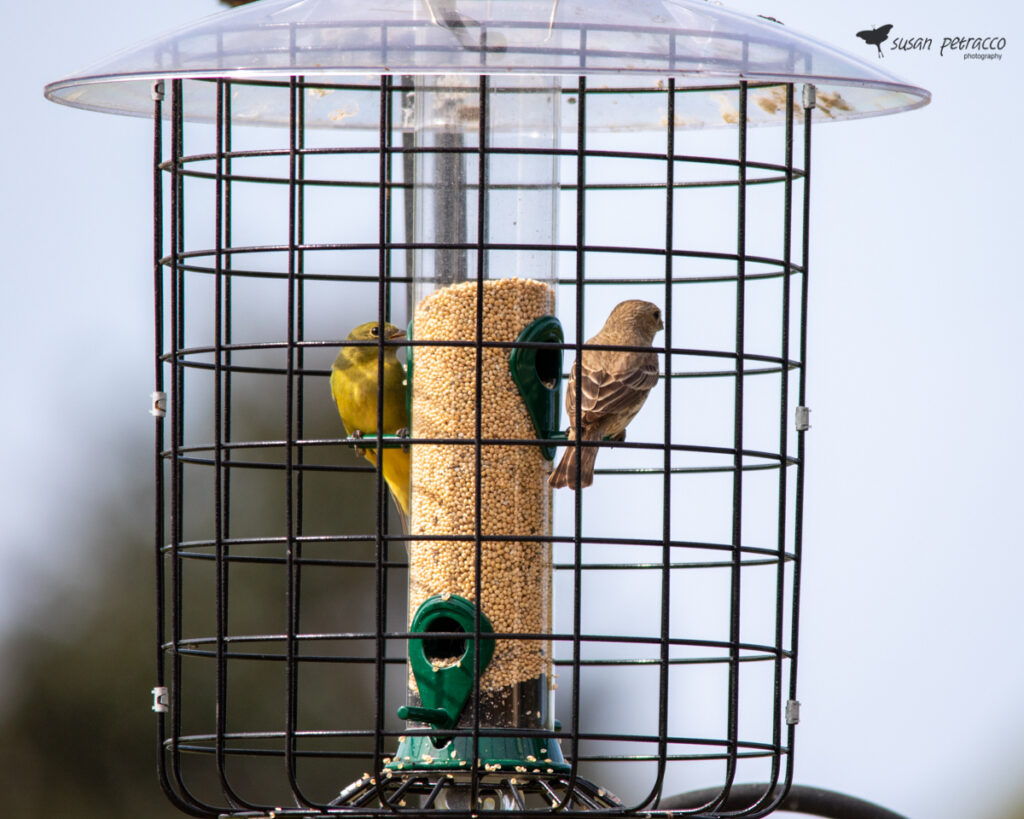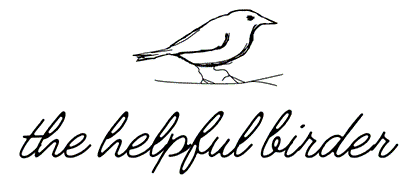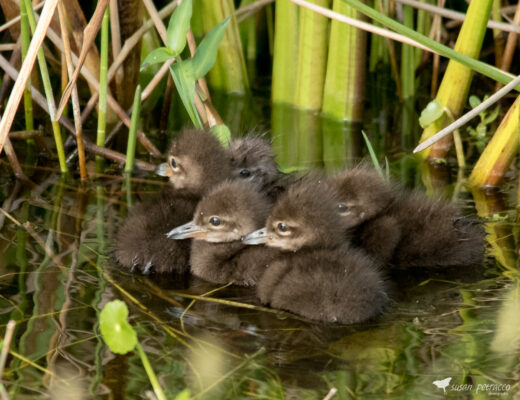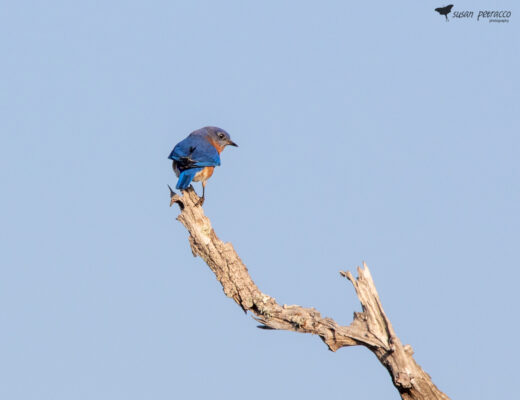Painted buntings are one of my favorite birds. They’re so colorful and active. Because painted buntings in Florida they only show up for a few months during winter, they’re also sometime I look forward to every year.
In case you aren’t familiar with painted buntings, they are fairly small songbirds. A mature male painted bunting is red, blue and yellow – he looks like an avian rainbow. Young males and females are mostly a yellow-green color, but just as stunning if less obvious. With a juvenile painted bunting, you can’t tell whether it’s a male or female – or even an adult female.
For years this species was my holy grail, my nemesis bird, the one I kept looking for and couldn’t find. Then one year I spotted two females at the Viera Wetlands. It wasn’t until the next winter that I finally saw a male at the same location, although along a different trail. Bingo! I was hooked.
I really thought how great it would be to see them at the bird feeders in my yard, so I did some research on what I needed to do. Today I want to share that with you.
Here are my tips on bringing painted buntings to your yard.
Where to Find Painted Buntings
Obviously, make sure you live where these birds frequent! Painted buntings are native to North America and are predominantly found in the southeast part of the country. Here in Florida, we get them in the winter. Further north – meaning coastal Georgia and the Carolinas – they’re either year-round or there during the breeding season aka spring and summer. They also breed further west in Louisiana, Texas, and the like. Click here for a full painted bunting range map for the species so you can make sure they’re in your area.

Painted Bunting Food
Painted buntings love white millet seed! In my yard, the buntings eat millet seeds almost exclusively. This is an easy birdseed to order online or find at a local bird supply store or even Walmart, Lowes, Home Depot, etc. It’s also called white proso millet. Make sure you don’t buy red millet, which isn’t as attractive to them, or worse, milo, which is just filler.
As with all bird seed, keep it sealed in a humidity-proof container so it doesn’t attract insects, raccoons (if kept outside), or develop mold.
Other birds like white millet too, so having a feeder that keeps out grackles and mockingbirds is essential.
Painted Bunting Feeder
The best luck I have had with feeders is to use a caged feeder made for small songbirds. These have a central tube that holds the seed, surrounded by a cage with holes small enough for the buntings to enter – but large enough to keep other birds out. Supposedly this helps the buntings feel more safe because they know that predators can’t get to them. I don’t know if they think things through that much, but it certain keeps the grackles and blue jays out.

The cage bird feeder shown above came from Wild Birds Unlimited.
I would really like to try and use a tray feeder so they’re easier to see and photograph, and I understand they work fairly well, too. I have a great tray feeder but it doesn’t work for white millet seed; they fall right through the grating. Next year I may look for a tray feeder that can hold white millet.
The Right Environment
Buntings – like many birds – want to have a place to hide from danger, like potential predators. It’s helpful to have some kind of shrubs or densely-leaved trees nearby that they can use to perch and rest. Mine are about 10-12 feet from my feeders.
You can also incorporate plants that they seem to like. Even if they choose the birdseed over the plants, they may help to attract them to your yard in the first place. A few years ago I added some Bidens alba (aka Spanish needle or beggarticks) to my butterfly garden because I had seen the buntings foraging on them at the Viera wetlands
Include a Water Feature
Buntings are also attracted to water – and prefer moving water to still water. So set up a bird bath or bubbler to provide them with a water source. Other bird species appreciate a place to drink and bathe too; you never know what might show up!
Painted Buntings Like Perches

I always recommend some kind of perch – preferably natural like a branch – near your feeders, especially if you like to take photos. A bunting inside the cage of a feeder doesn’t make nearly as pretty a picture as one perched on a branch. Plus, a perch gives them one more option for a place to sit while they survey their surroundings or wait their turn at the feeder.
If you’re here in Florida, like me, you’ll get to enjoy these beautiful birds for several months before they fly back north to breed. Providing them with a consistent source of food helps them “fatten up” and store reserves that will become the energy they need during their migration. And while you’re helping them thrive, you can also enjoy the amazing view.




3 Comments
Audrey at Two Pink Peonies
May 11, 2020 at 5:30 pmThese painted buntings are so beautiful! I’ll have to try to put out some white millet seed, we have sunflower seed out right now but mostly the squirrels eat it hehe
Susan
May 11, 2020 at 6:21 pmI’ve decided to embrace the squirrels, as well as the grackles. They all gotta eat!!! But they’re not nearly as awesome as the buntings.
Rose Light
January 17, 2024 at 1:35 pmSquirrels , jays, starlings and grackles don’t like safflower seeds but doves and cardinals love them. Also Brome Squirrel Busters really work. I’ve used them for years. I put white millet (buntings’ favorite) and sunflower seeds in those.